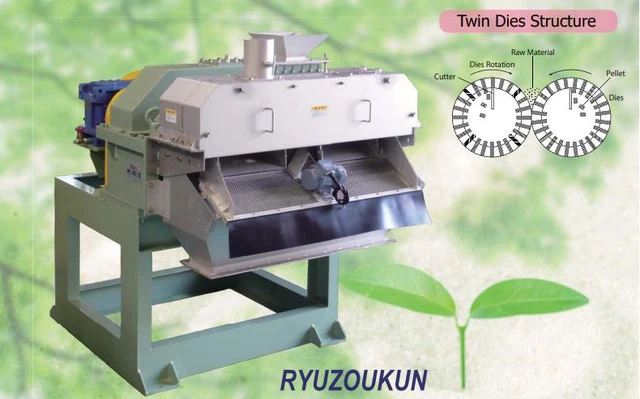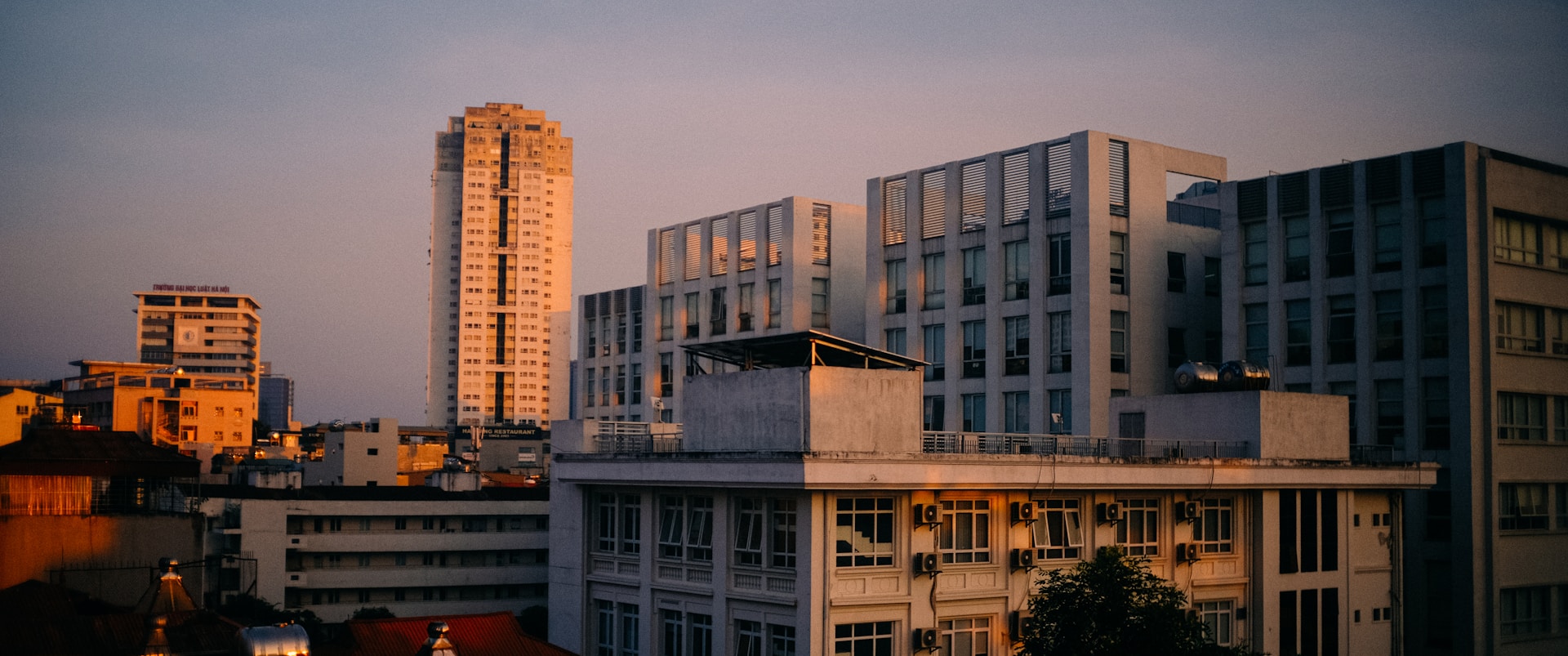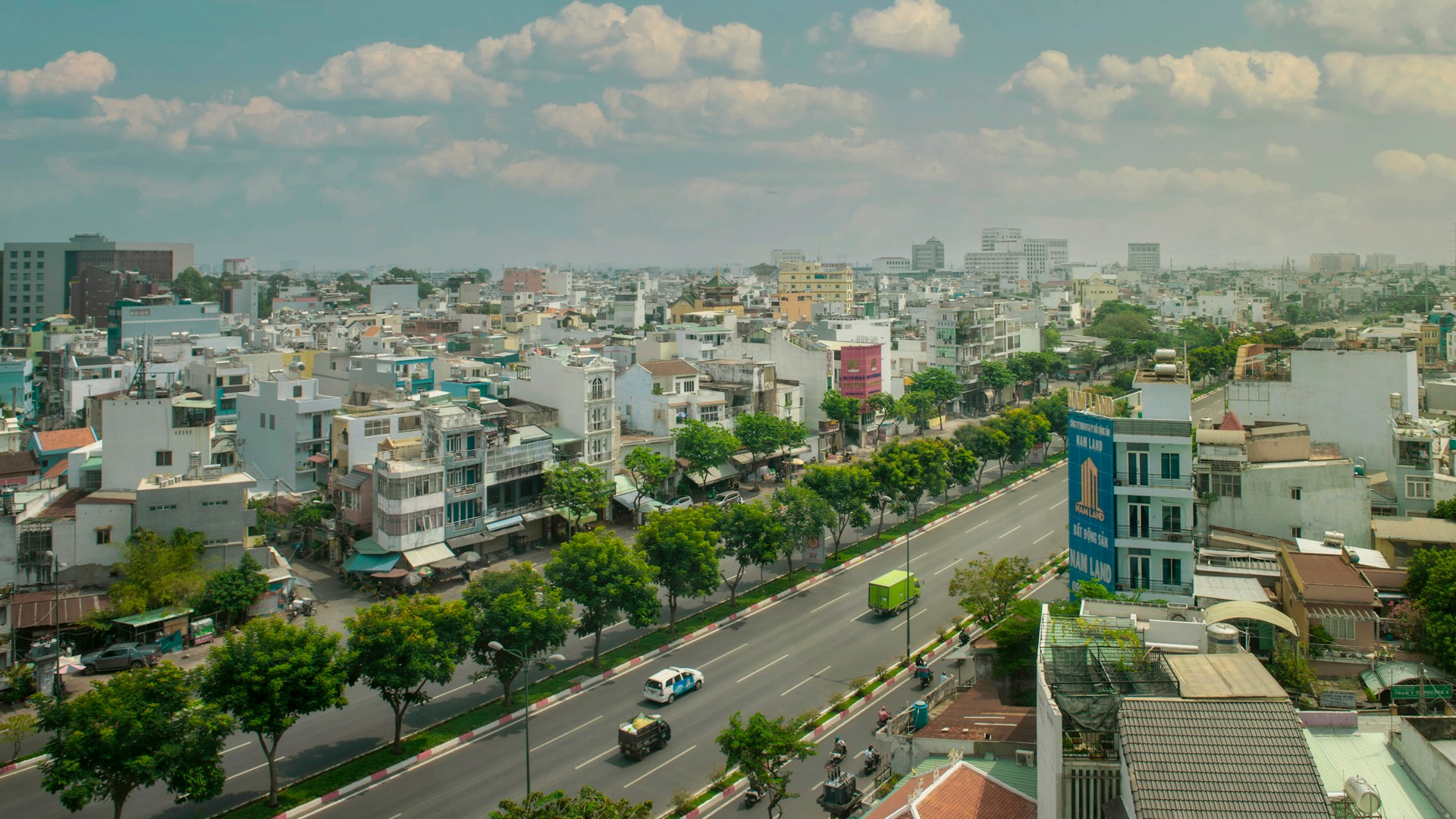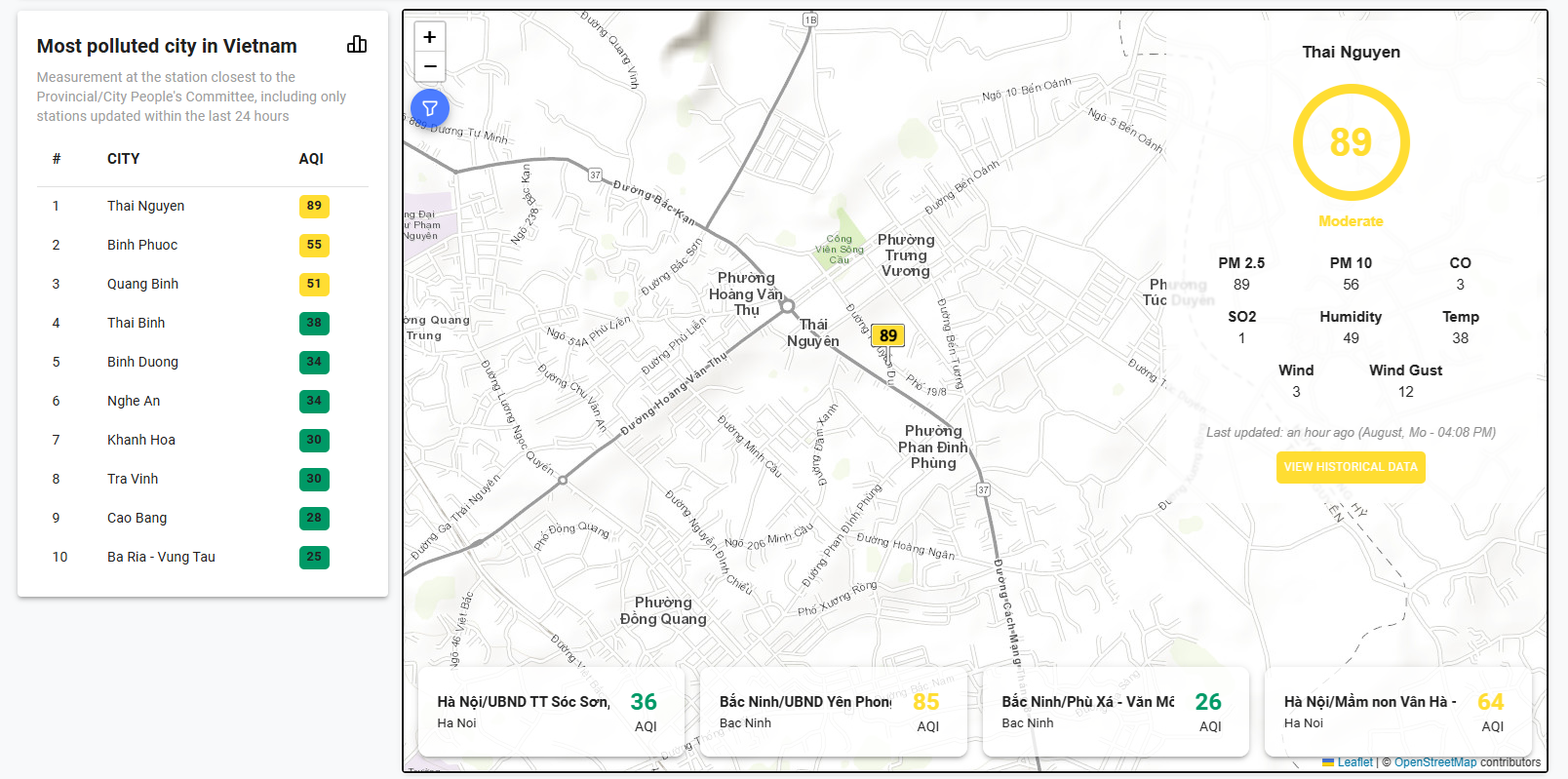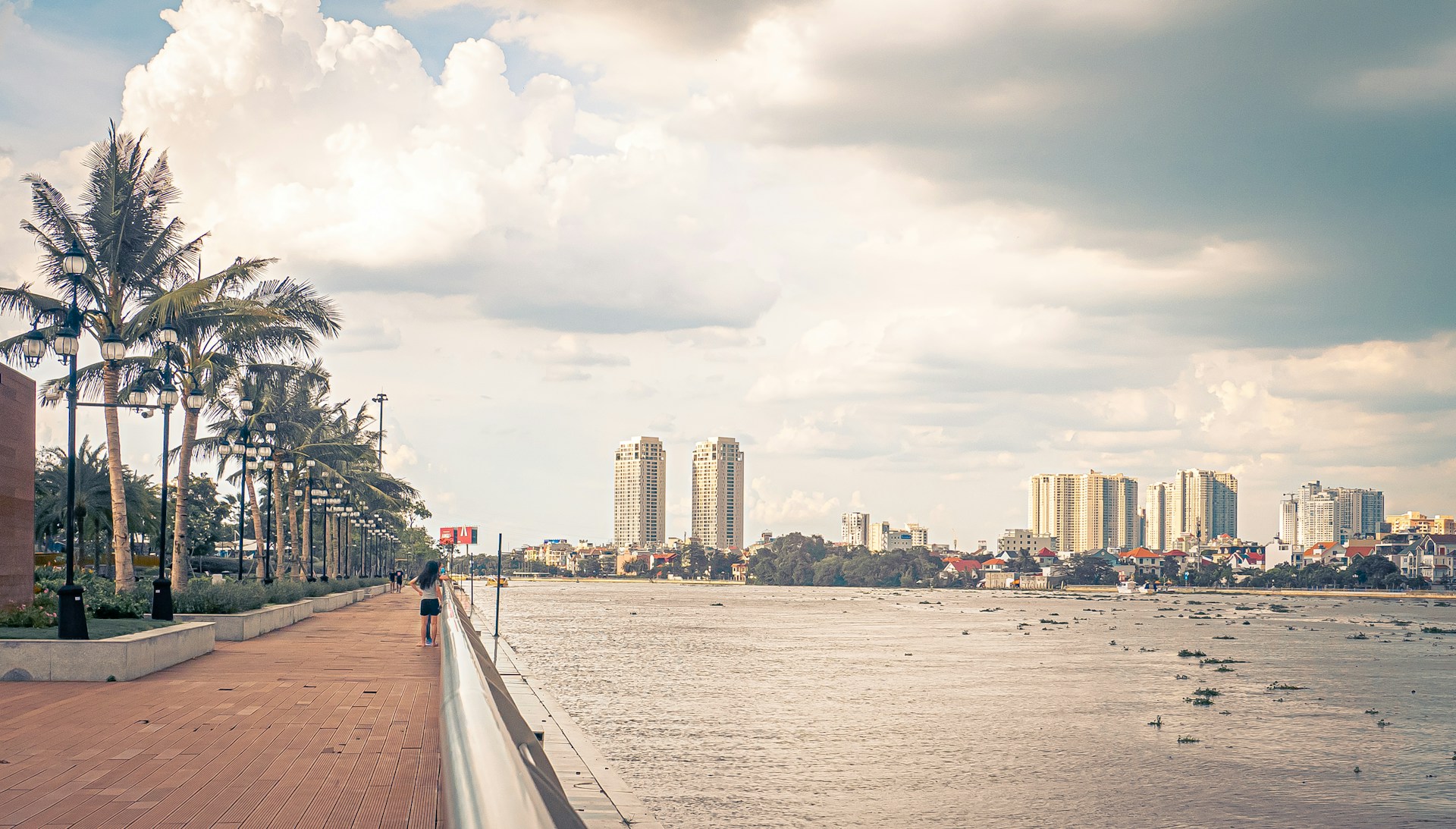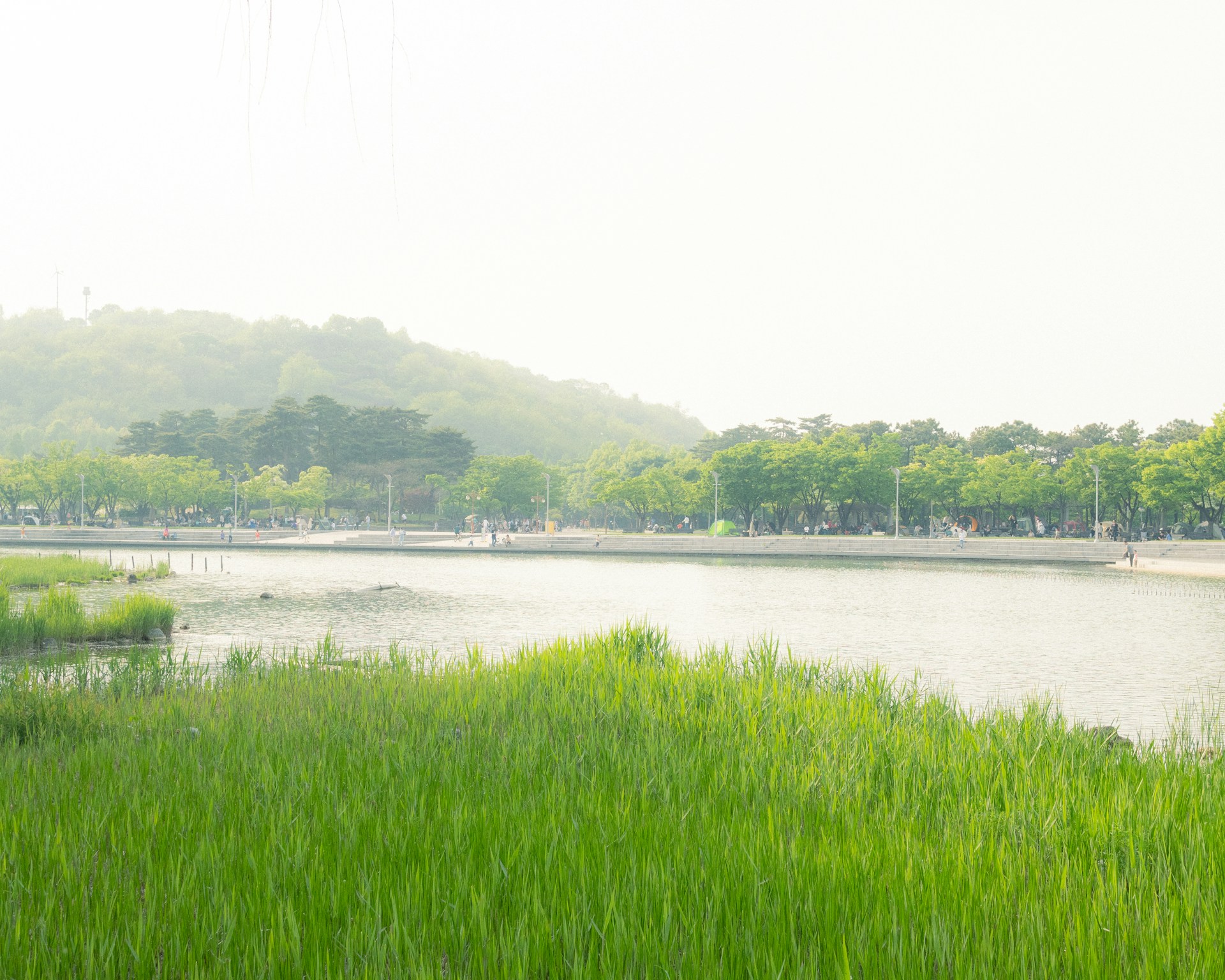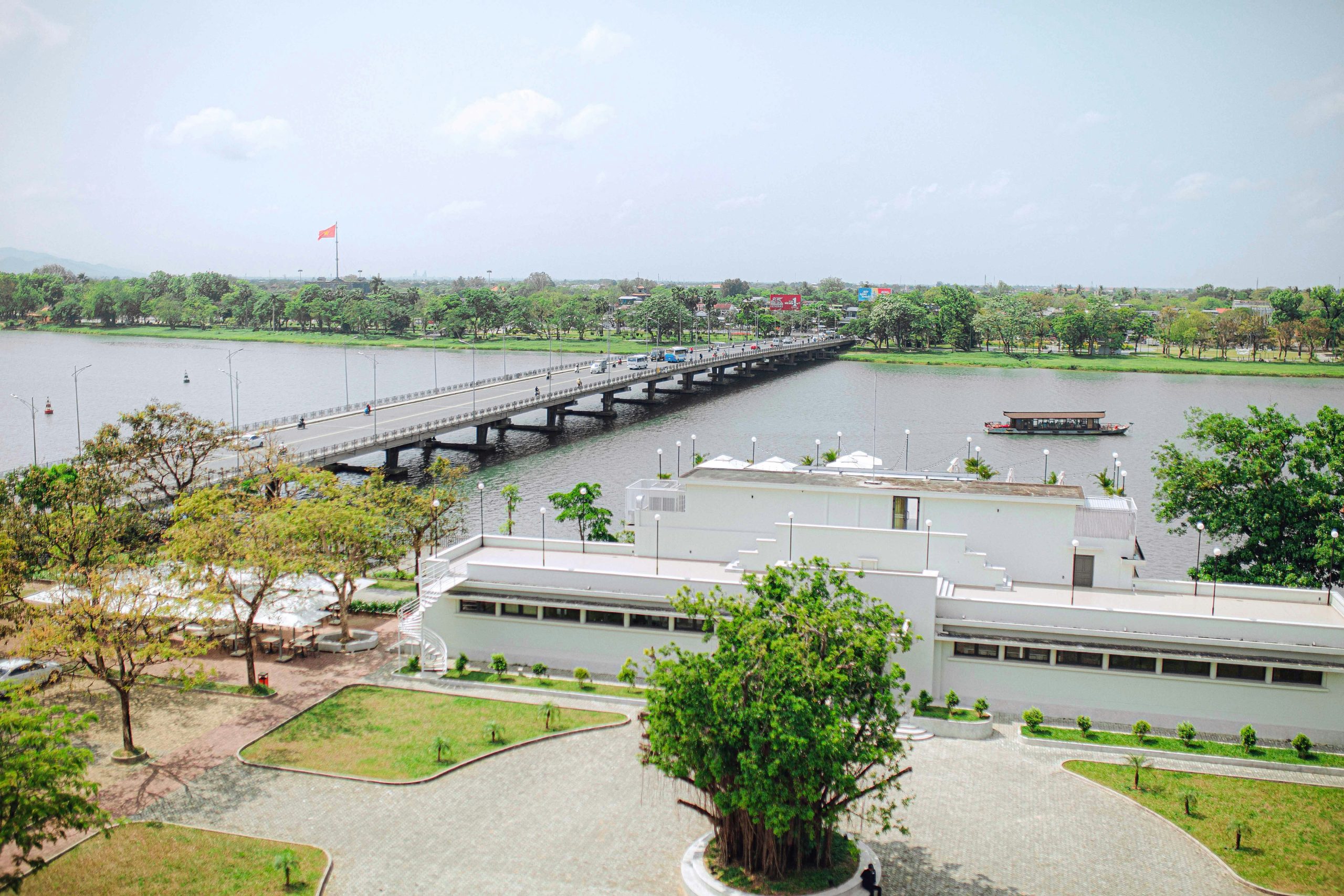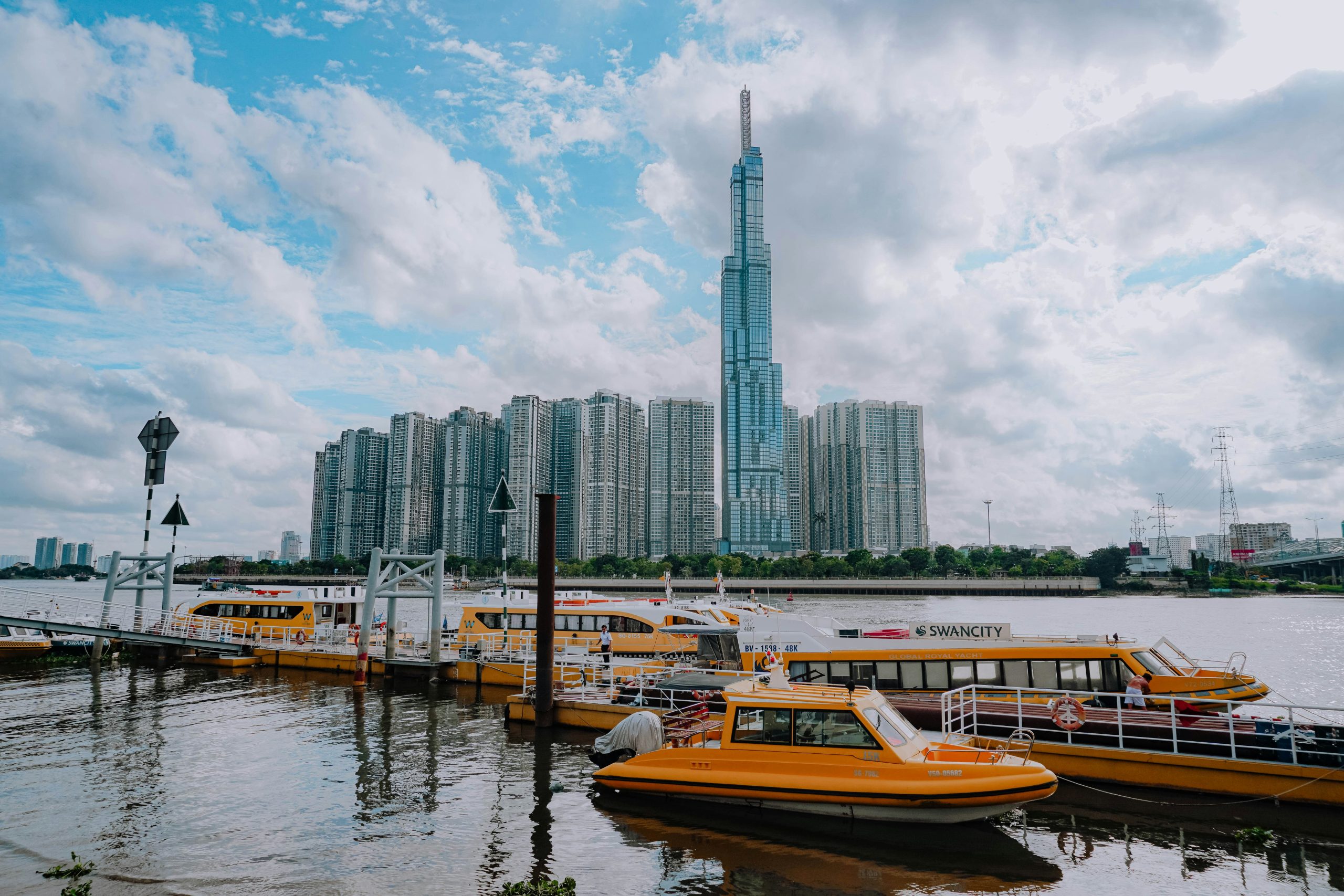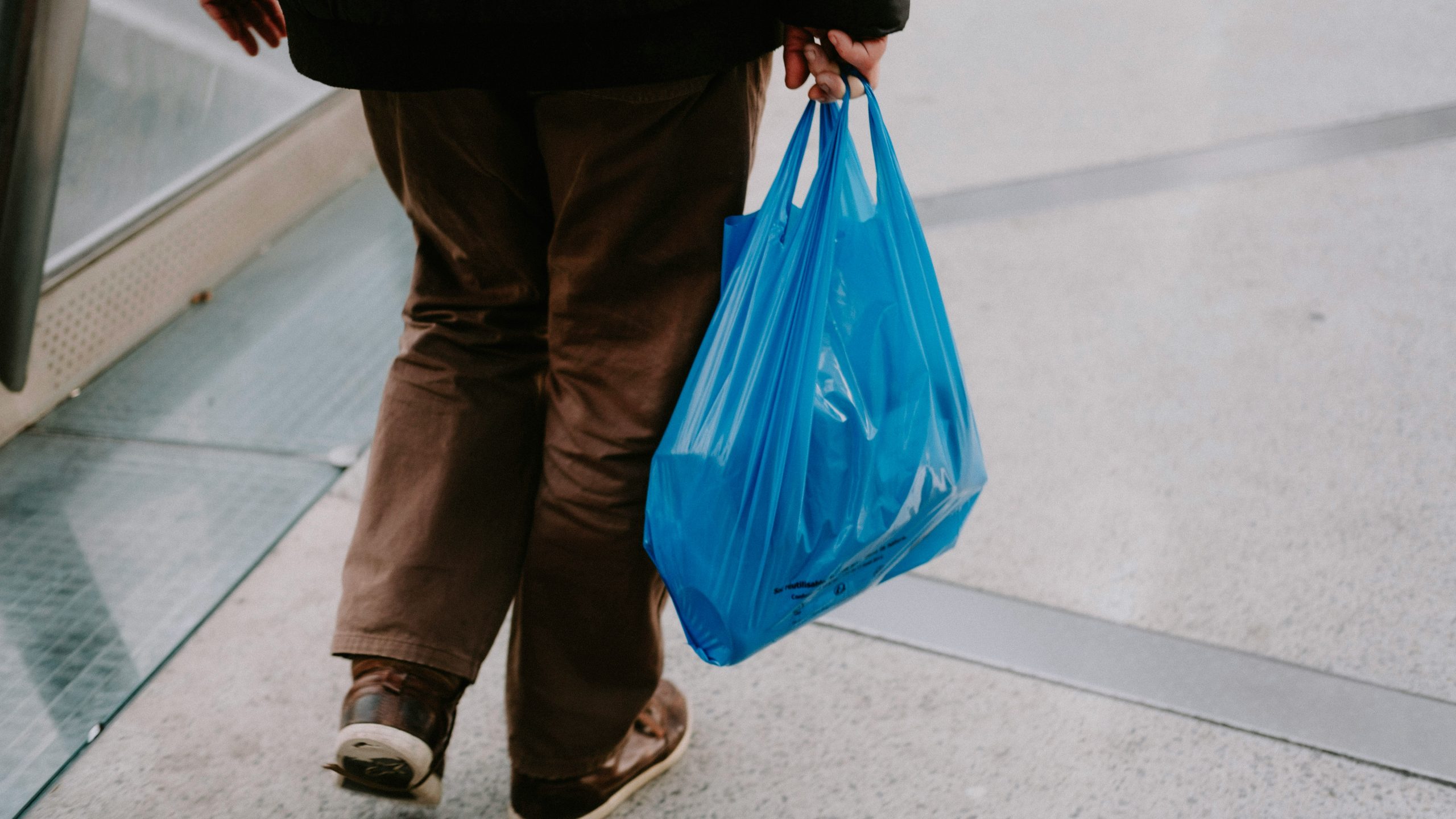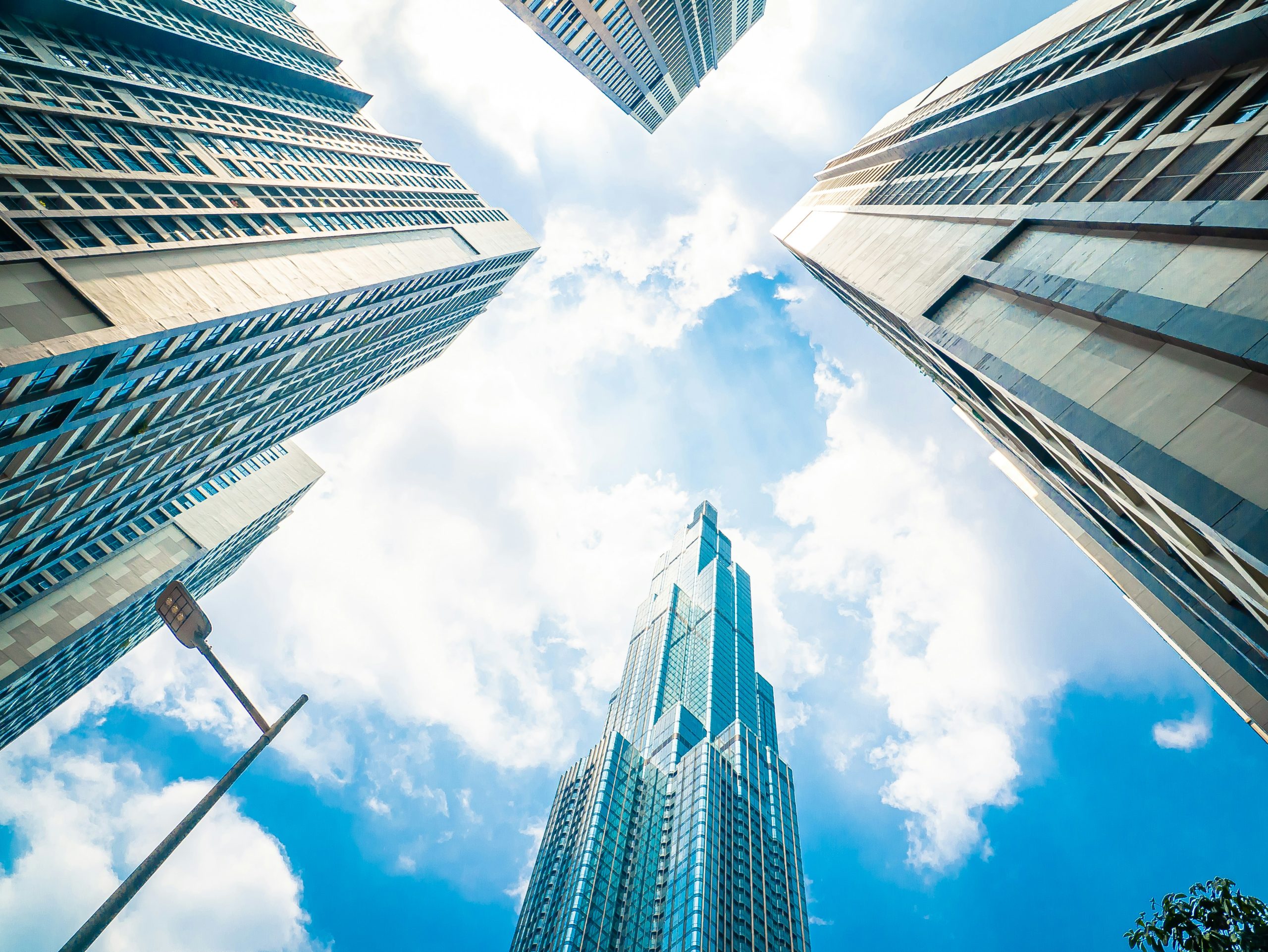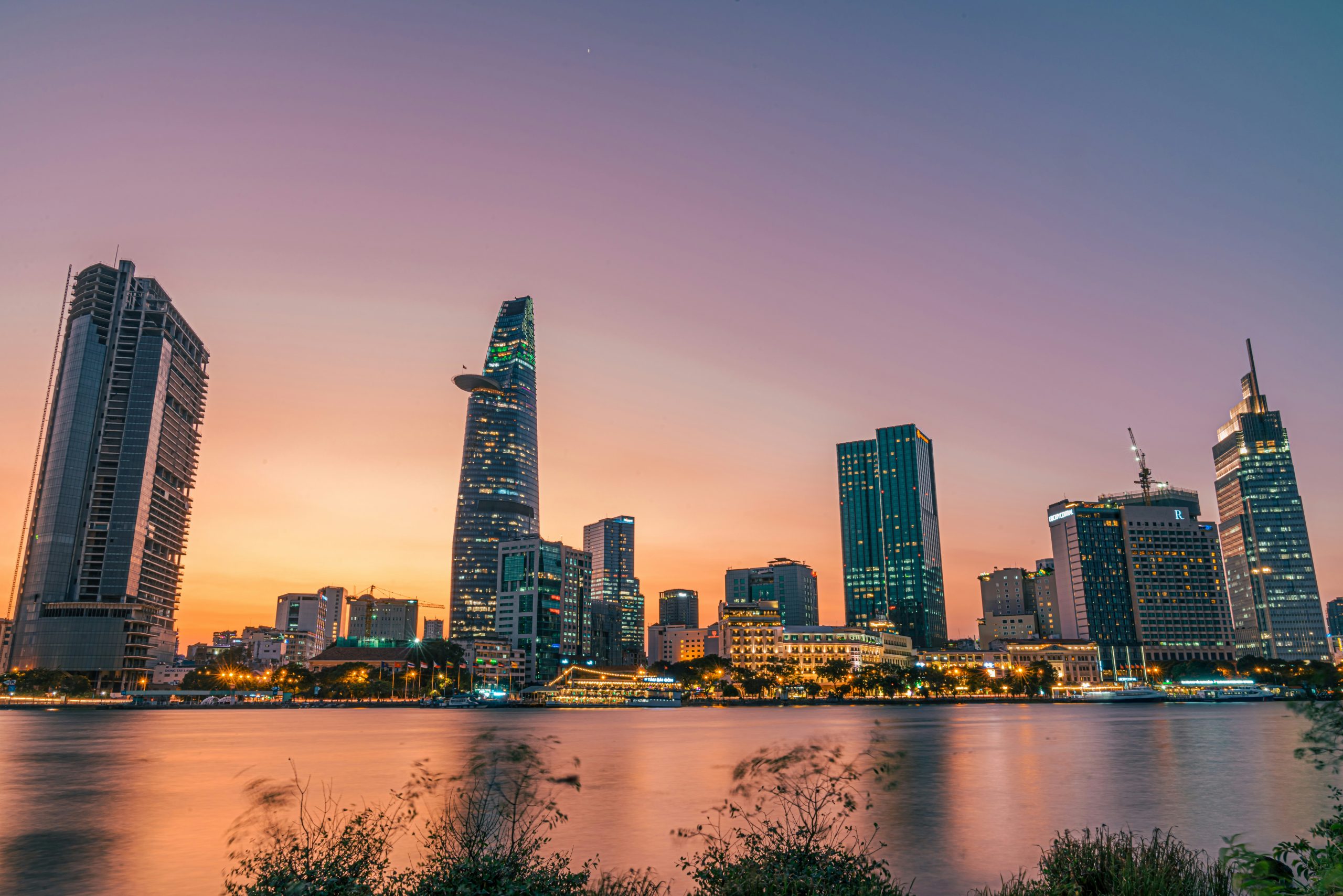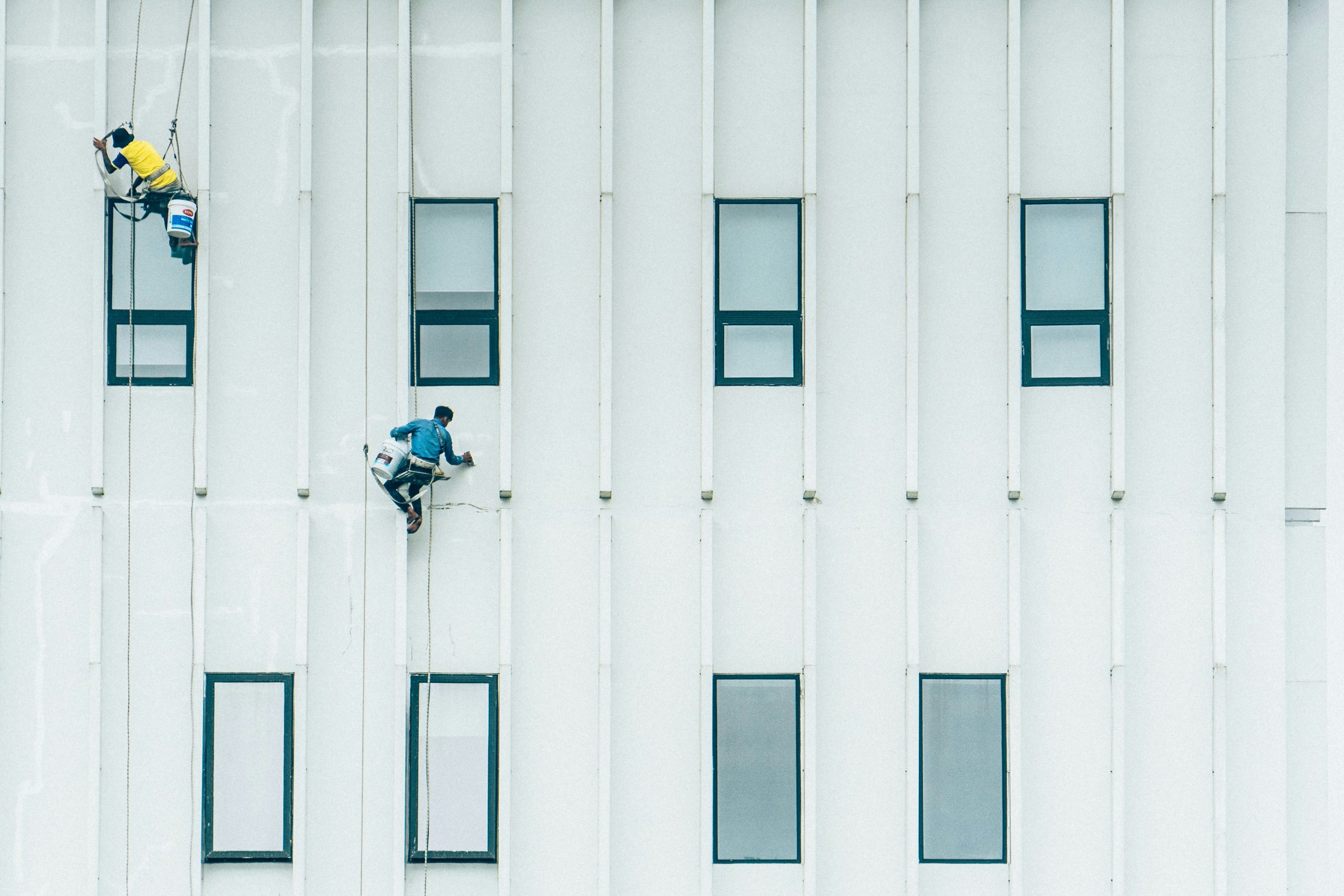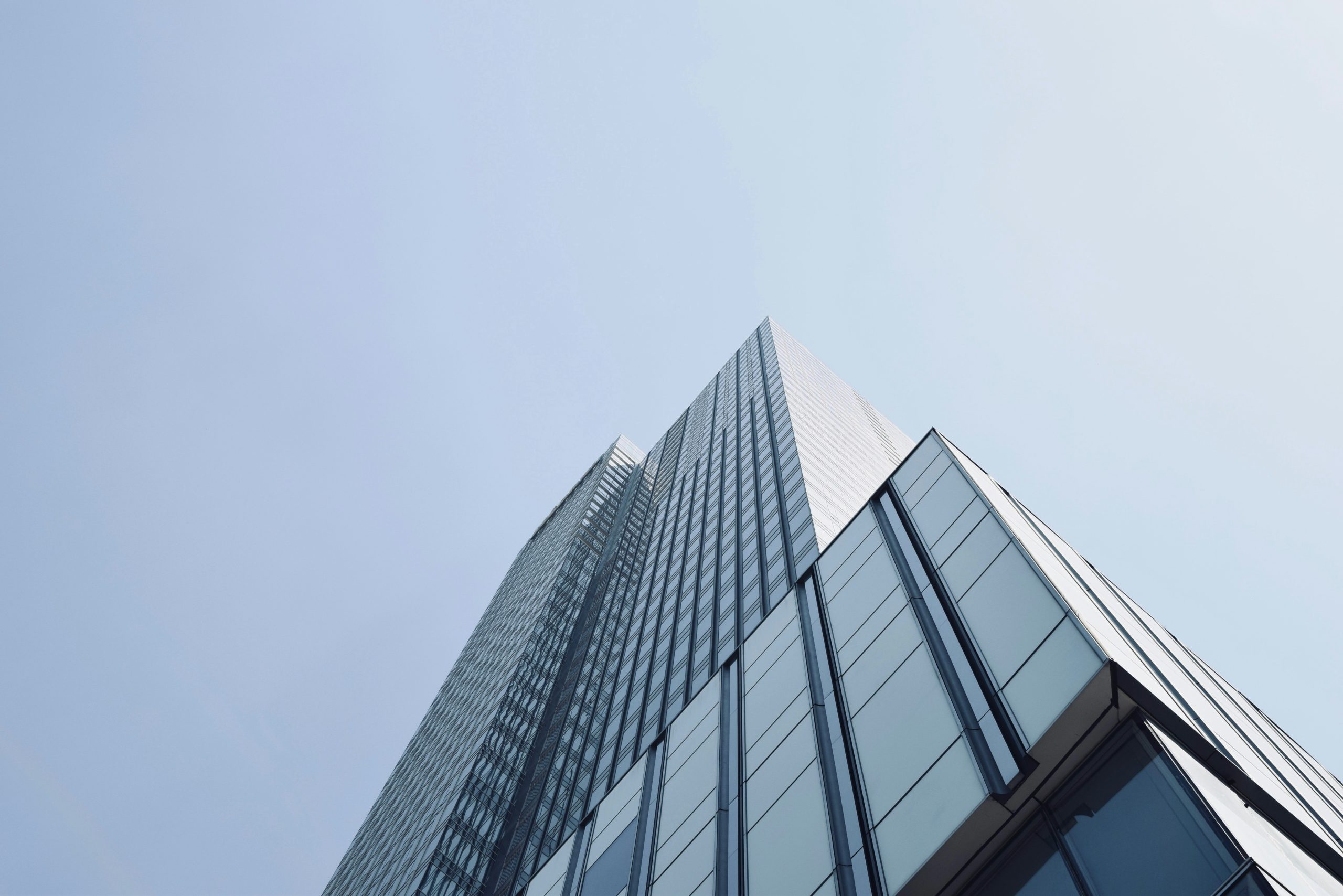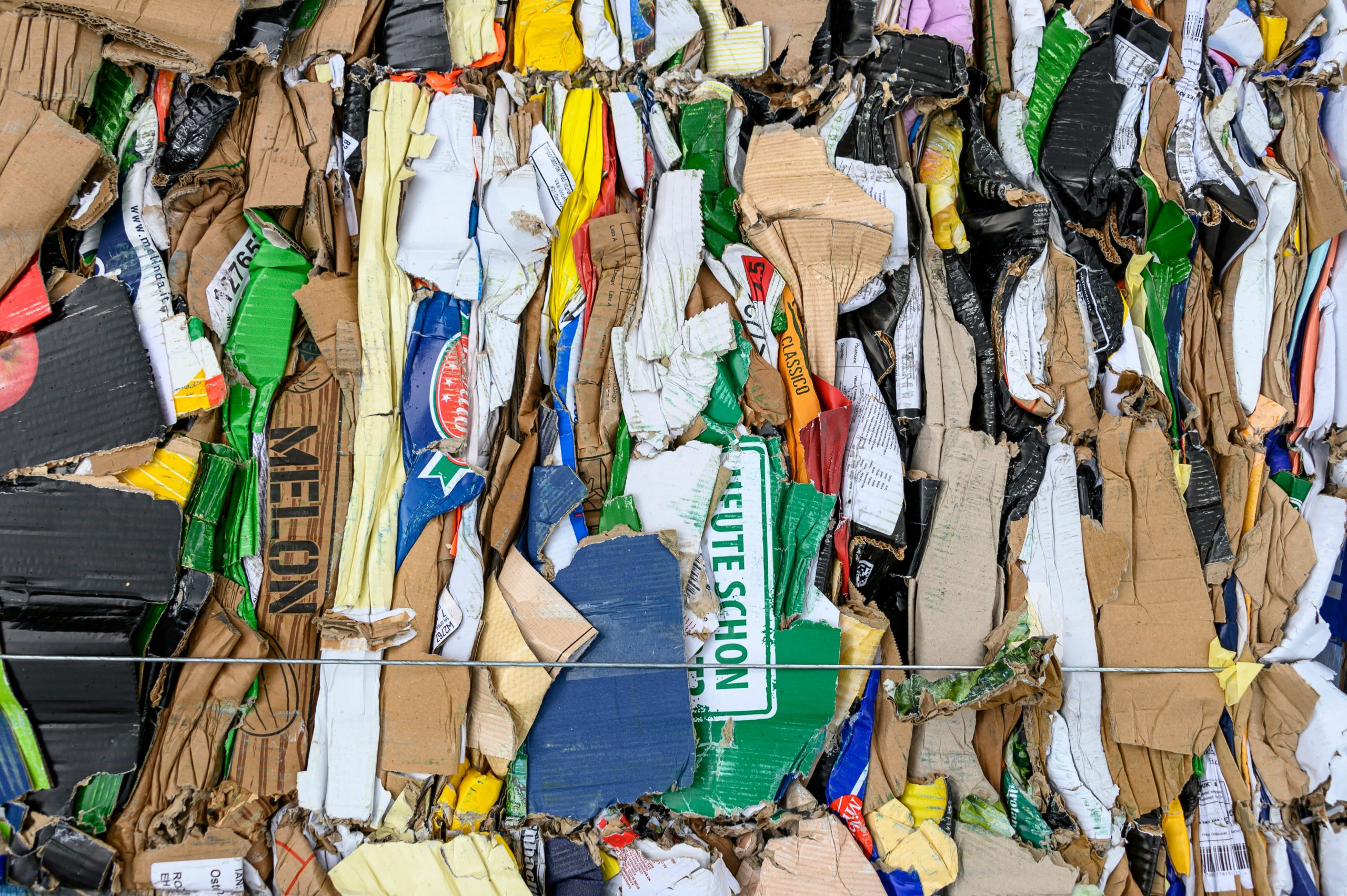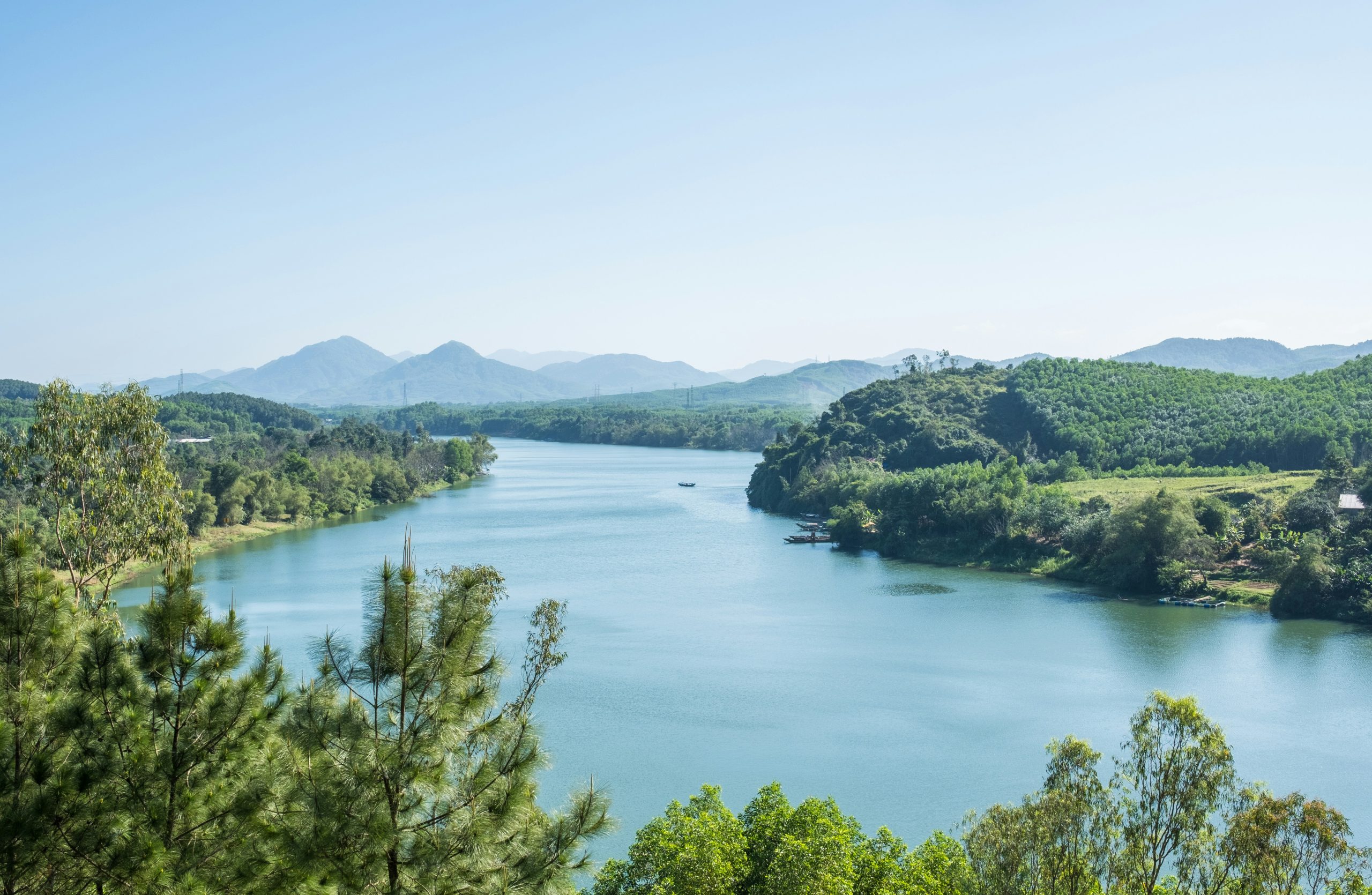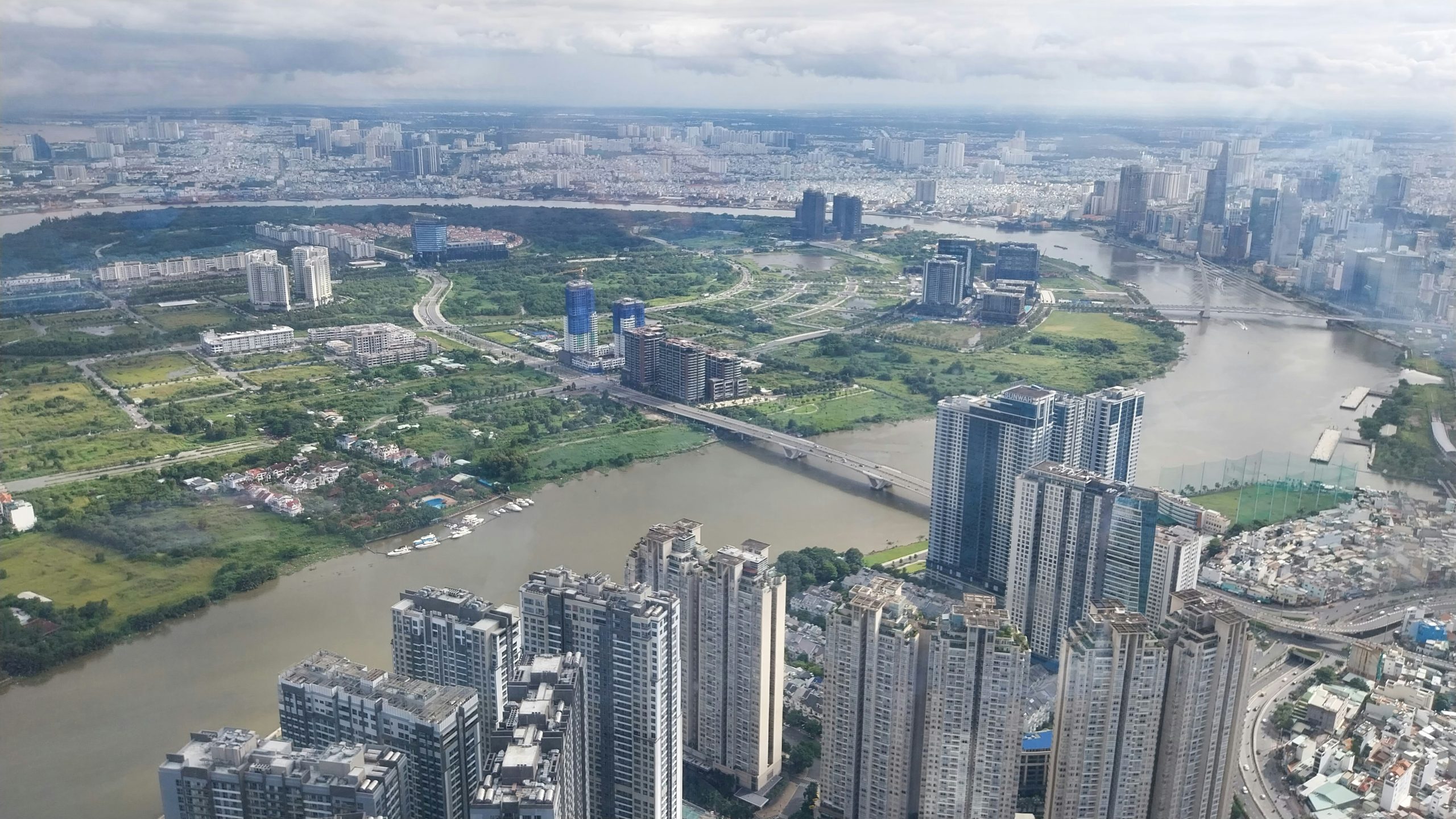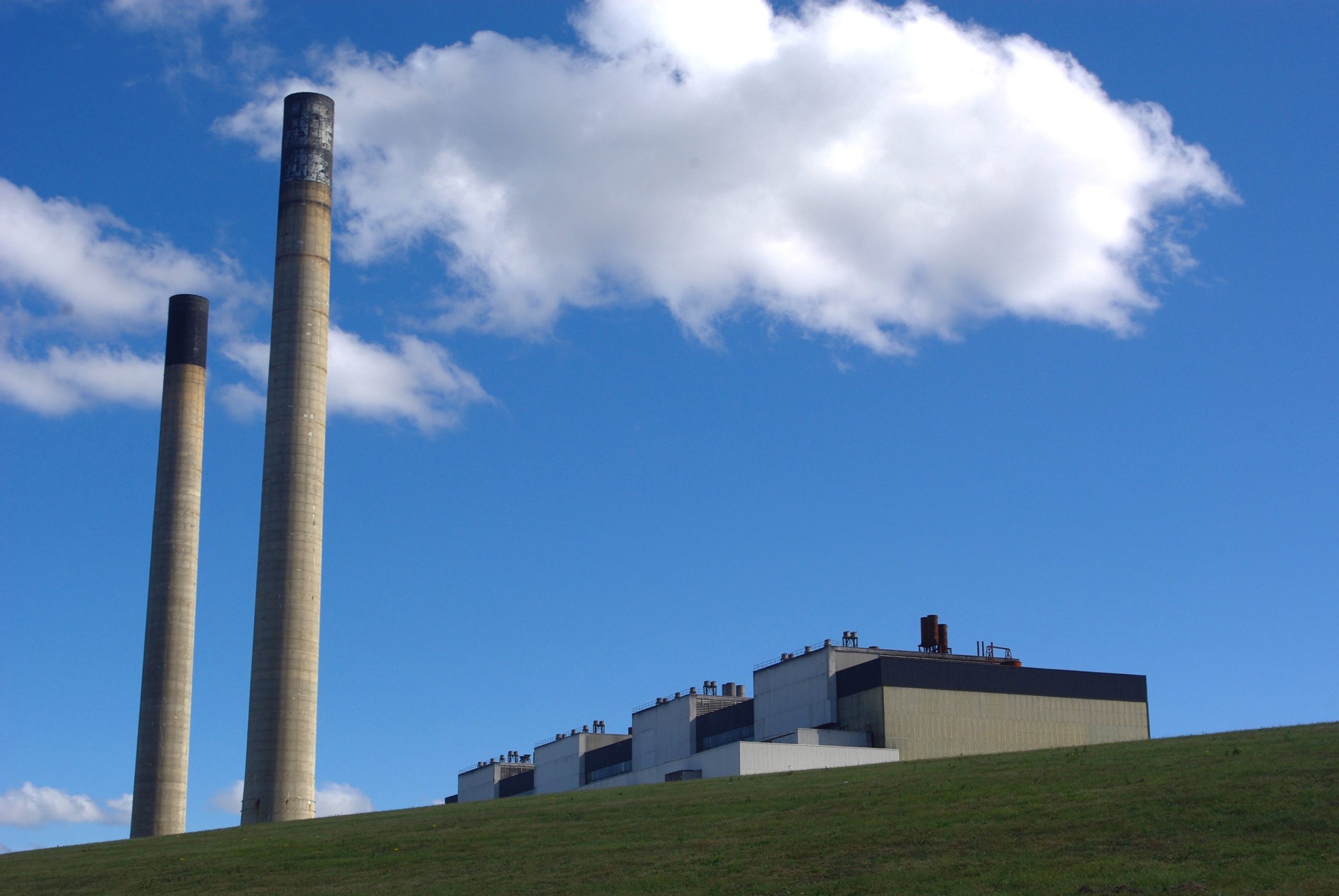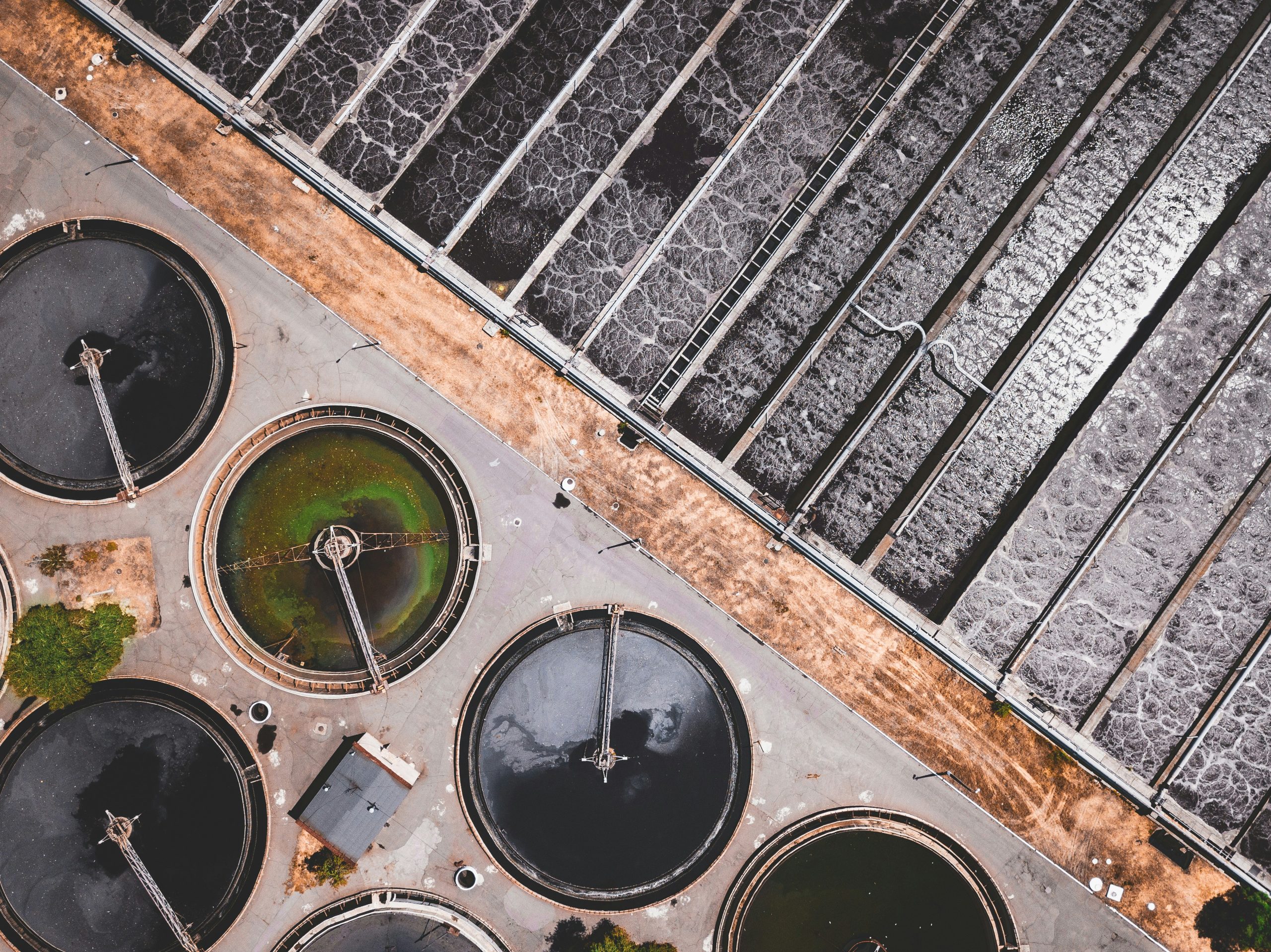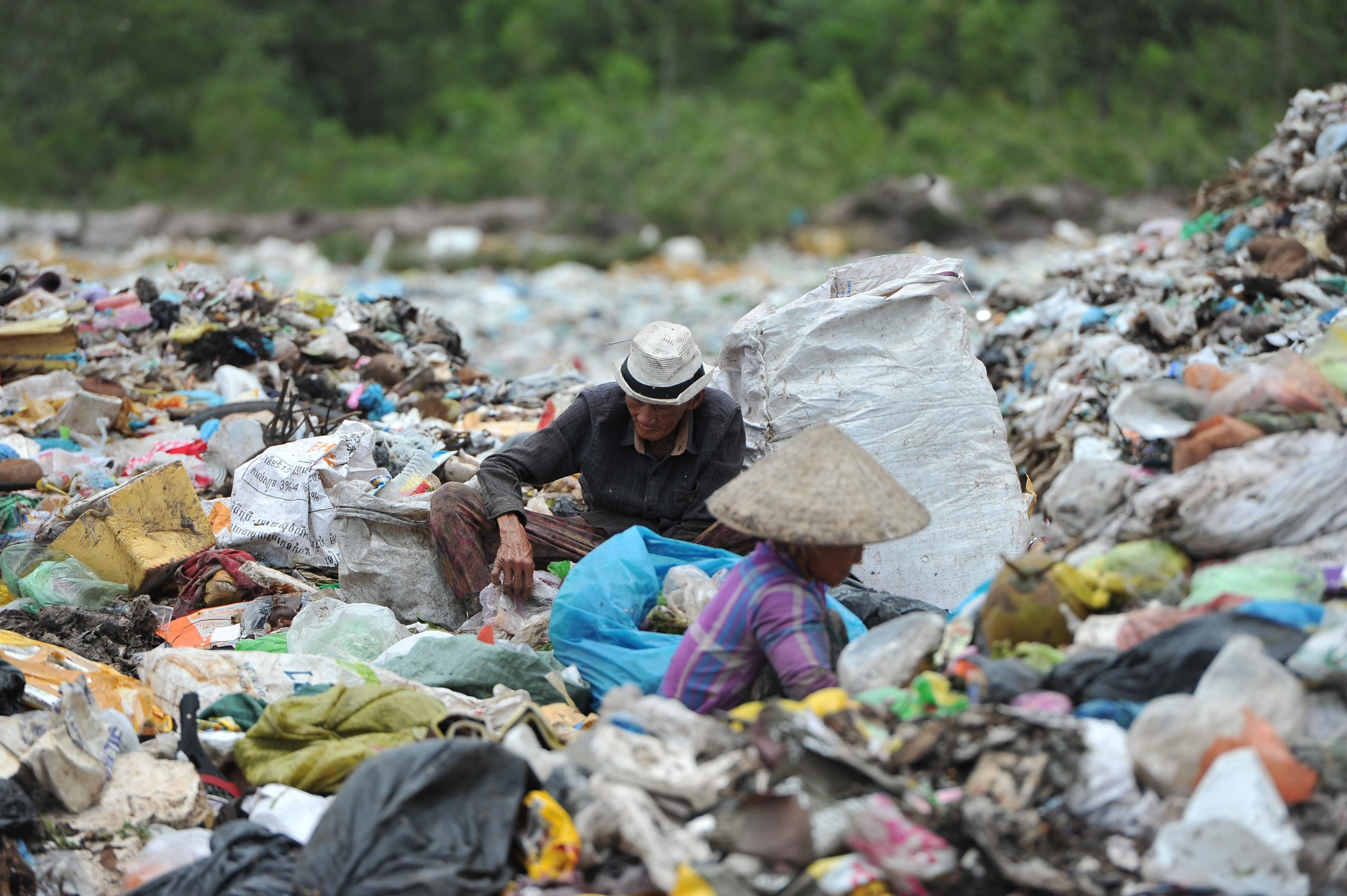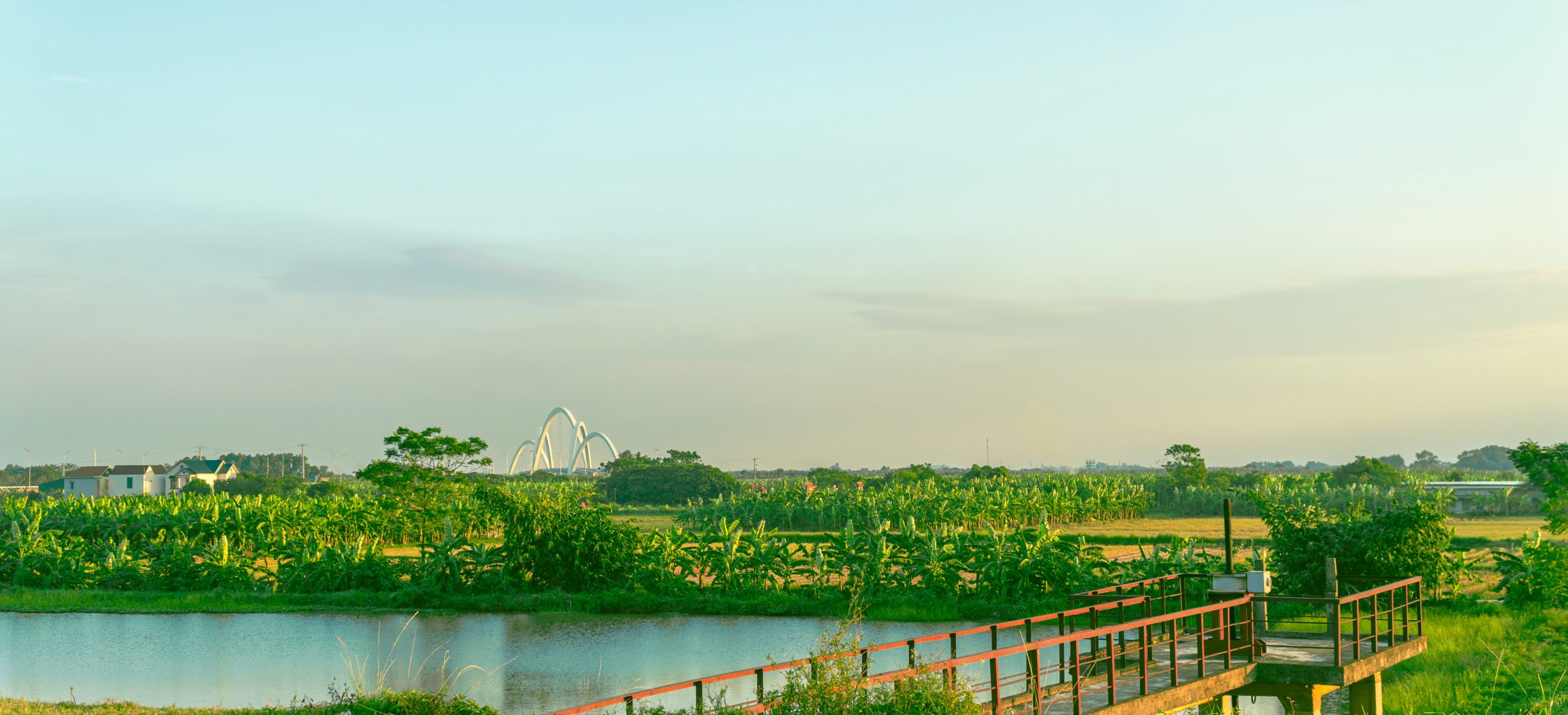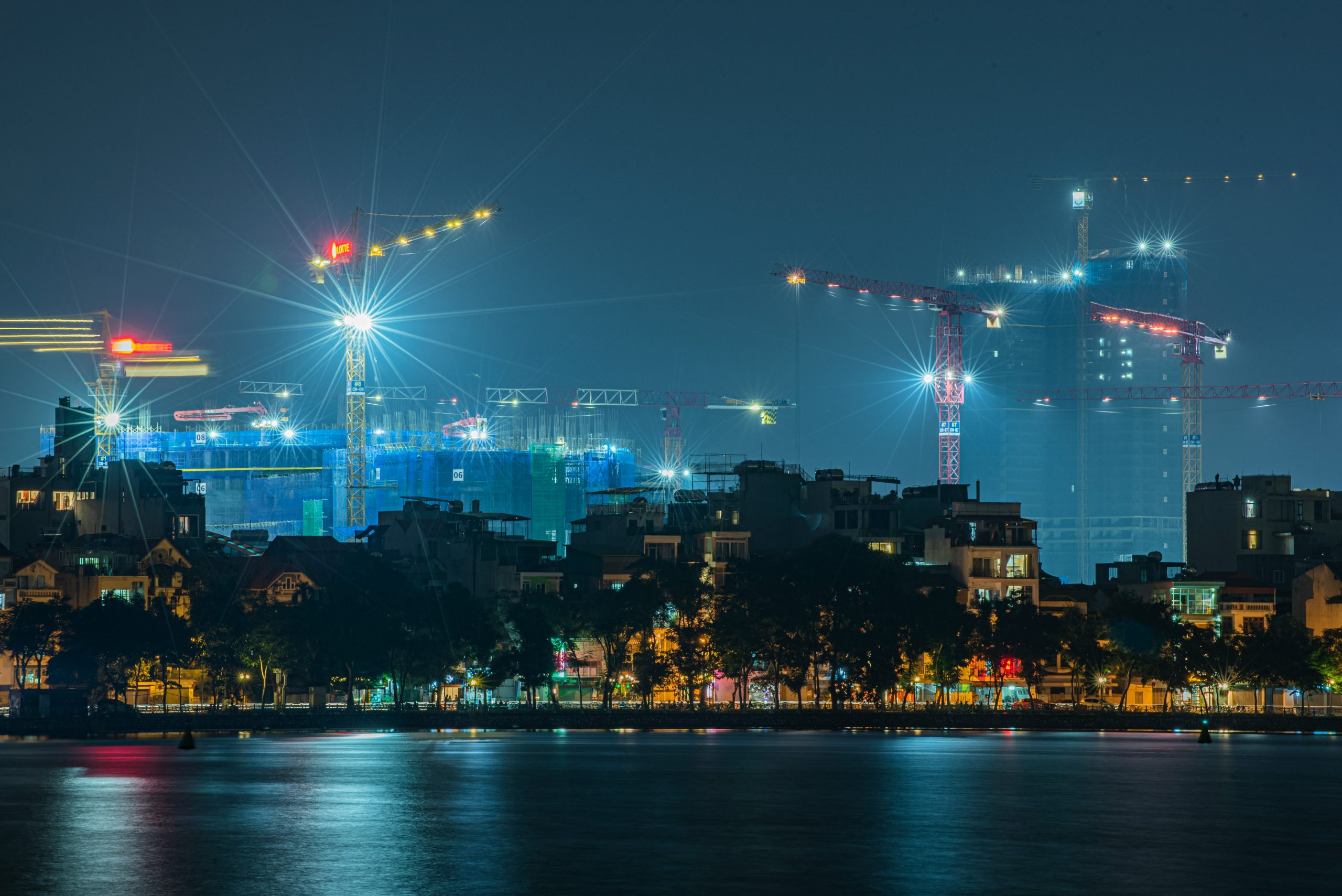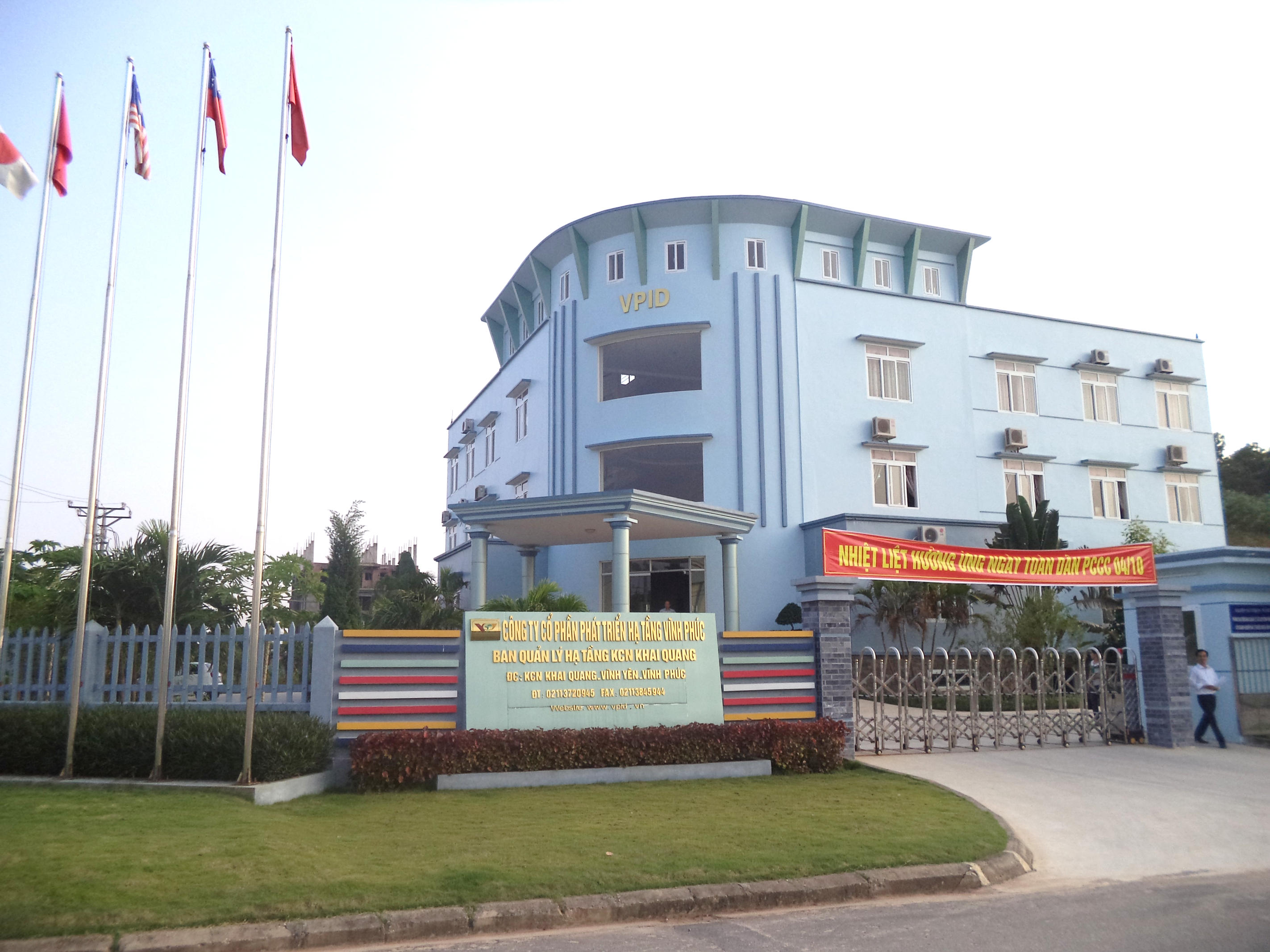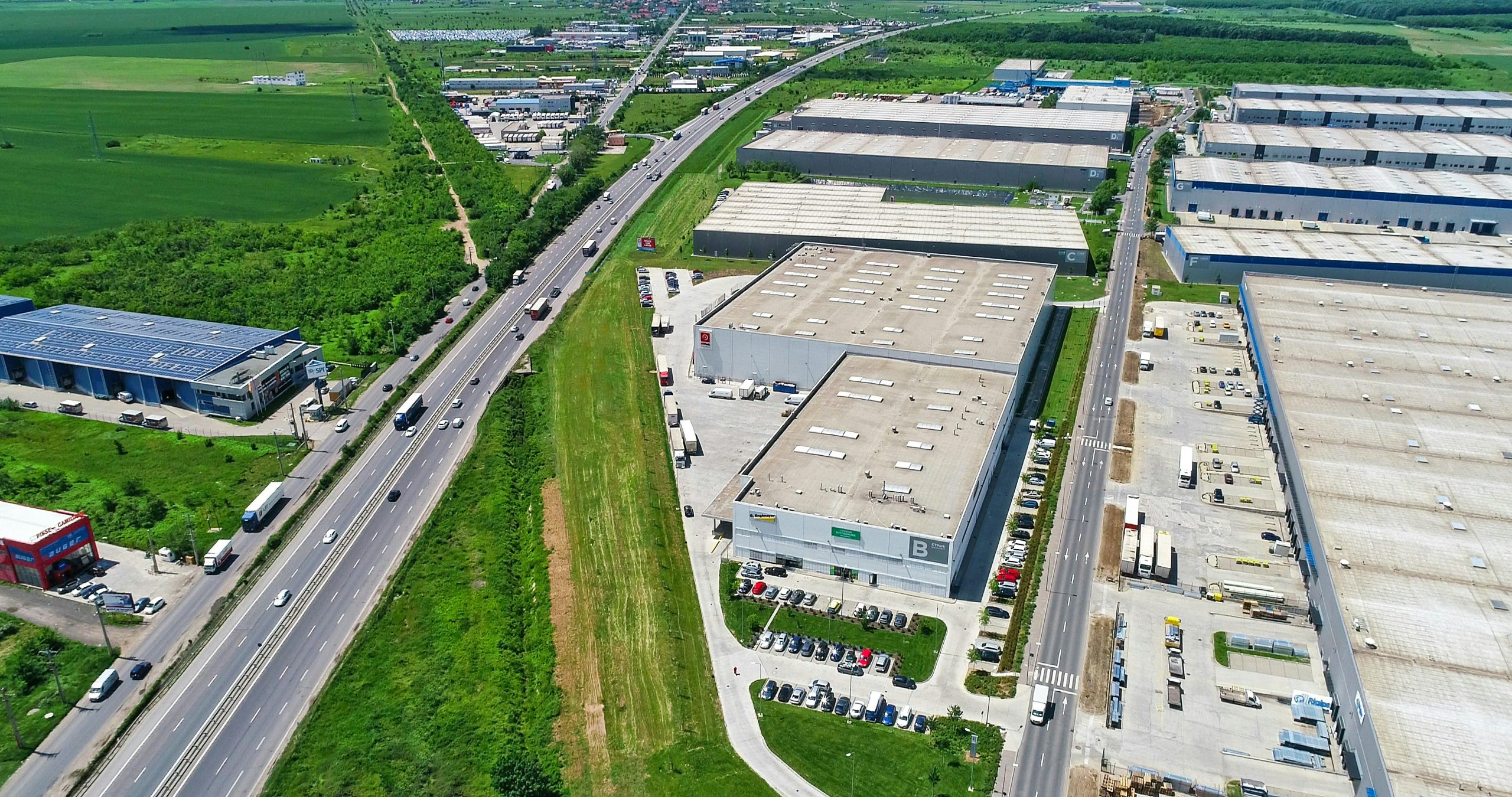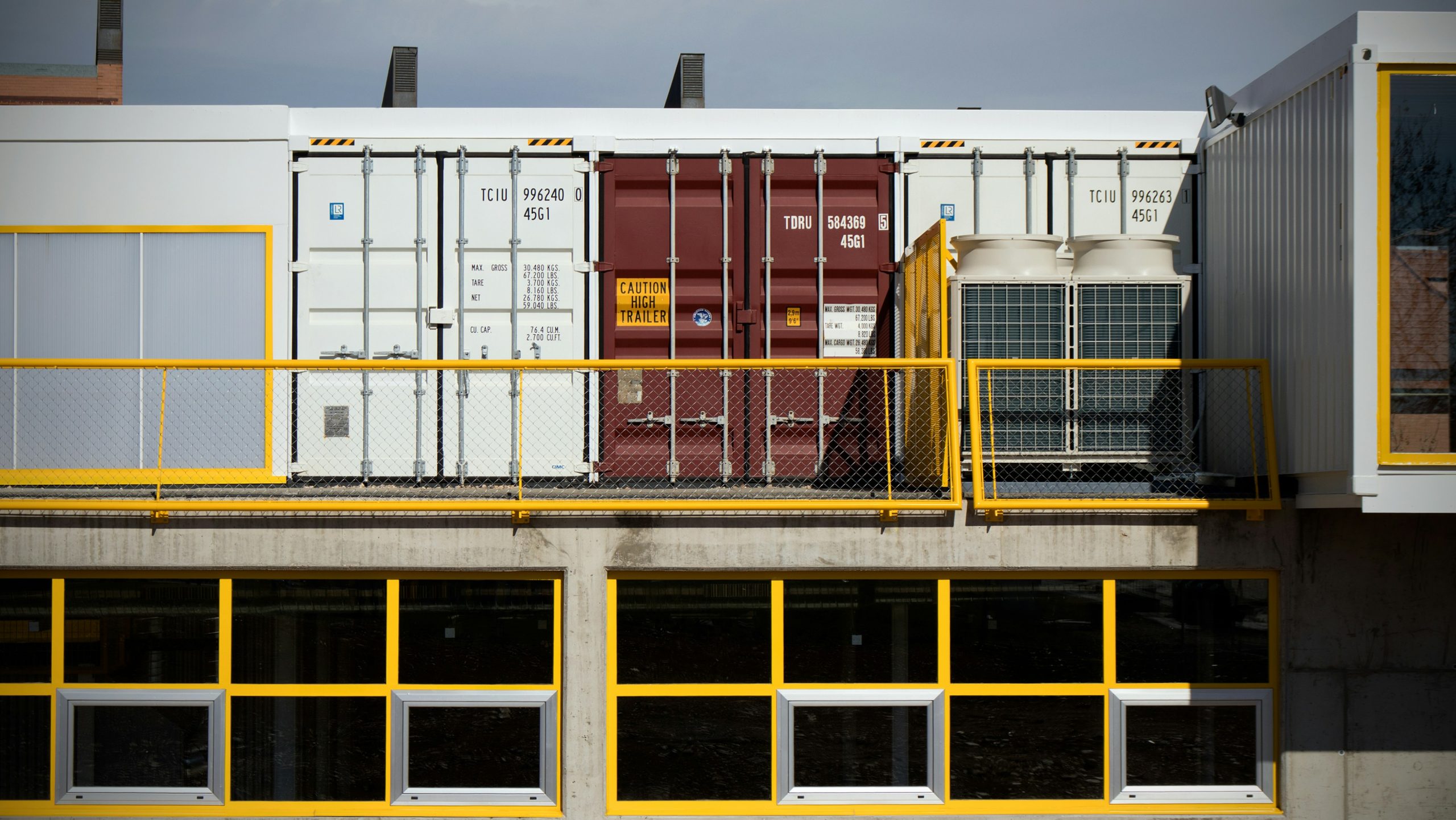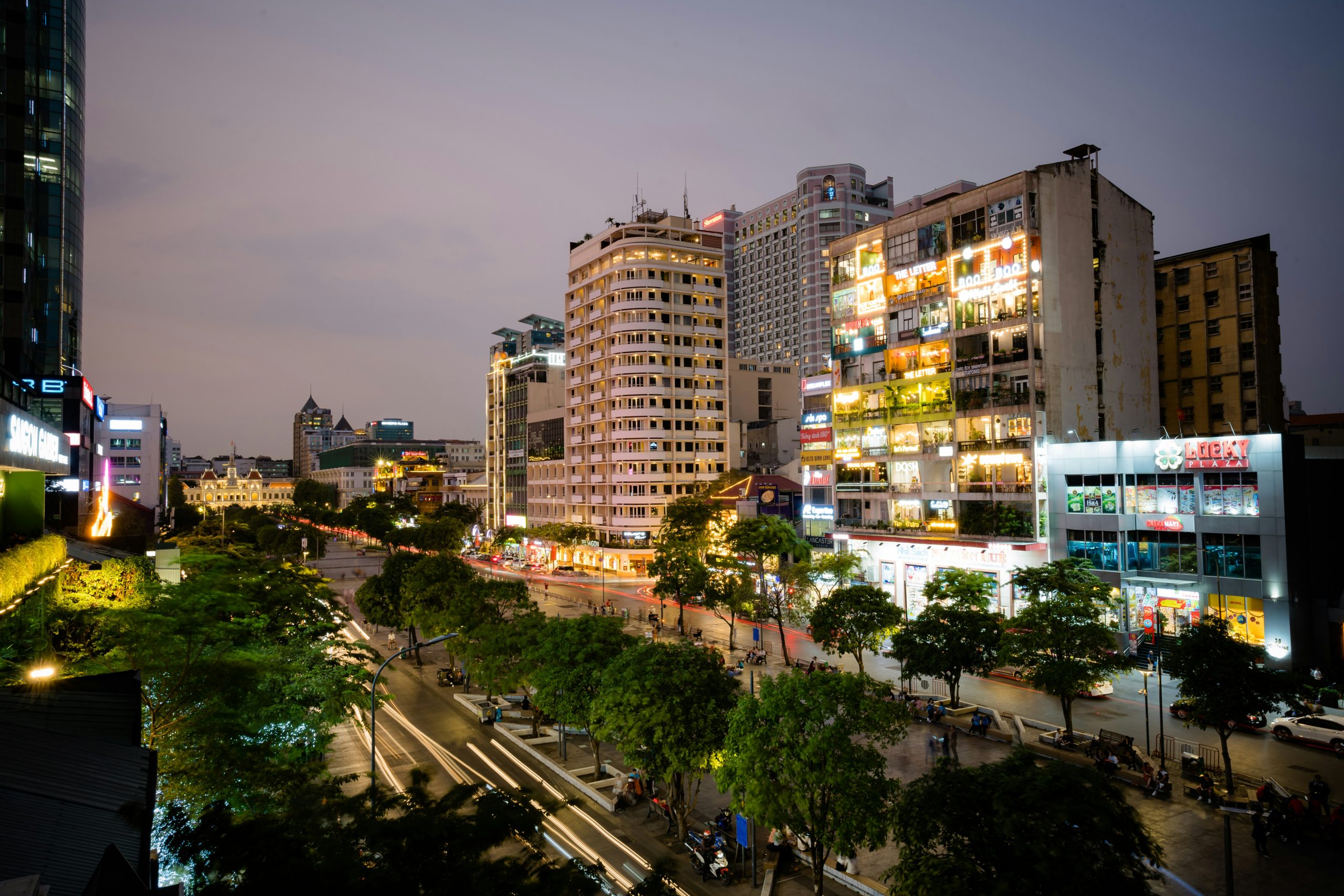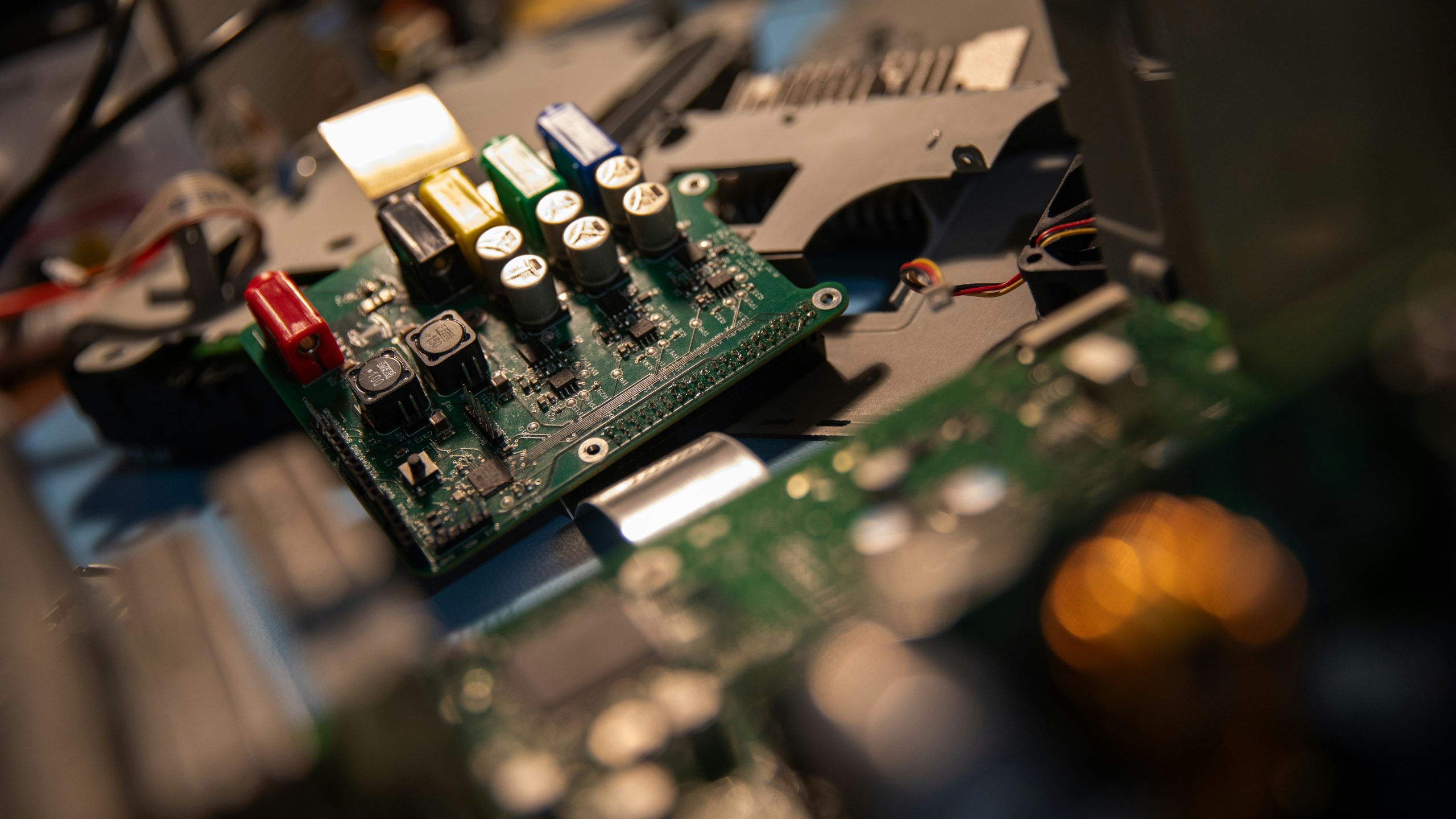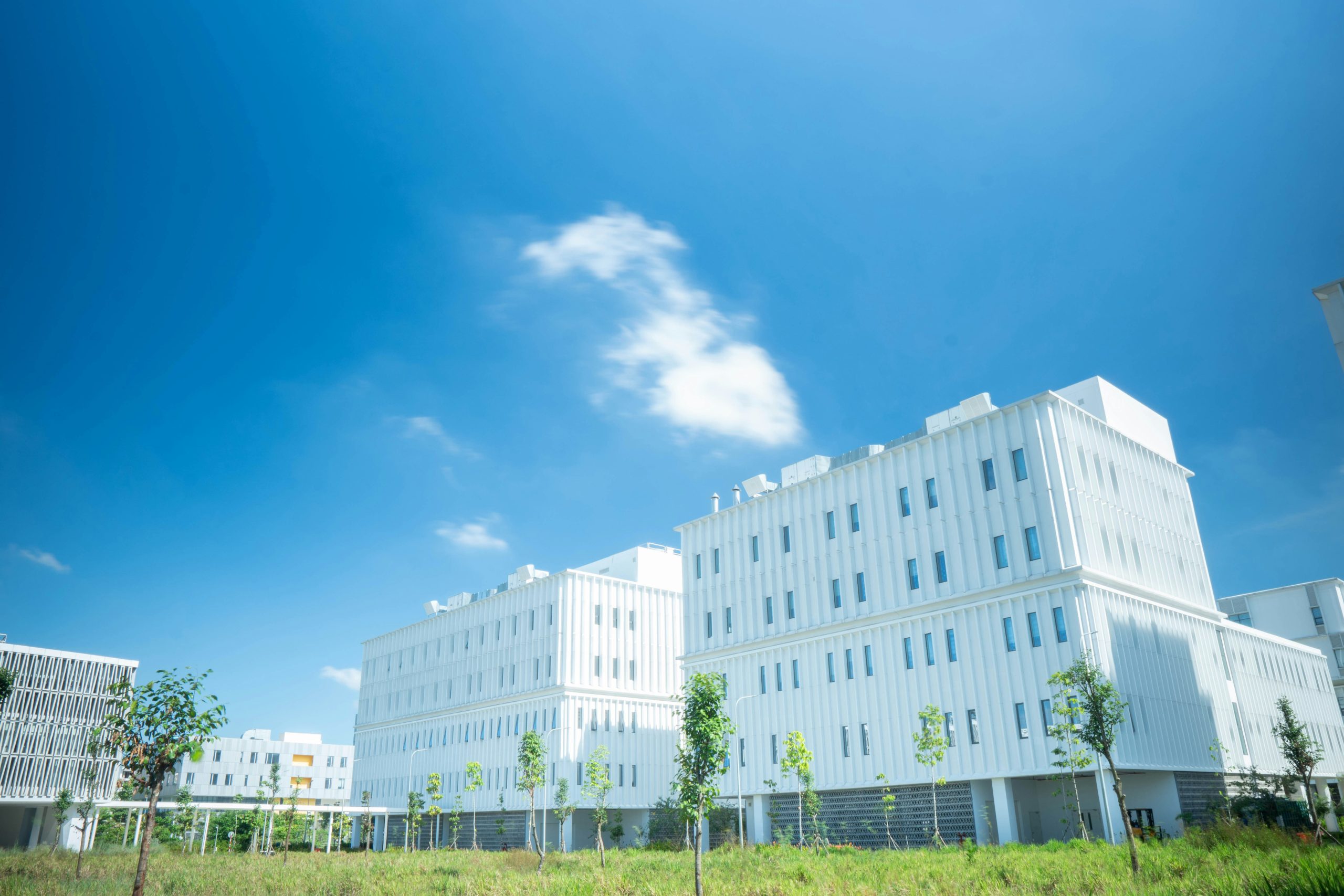
02Apr2025
Highlight content / Industry Reviews / Latest News & Report
Comments: No Comments.
Current status of green buildings in Vietnam and trends
The number of green-certified buildings in Vietnam has steadily increased over the past 14 years. While only one building was certified each year in 2010 and 2011, the number increased to 20 by 2012, 26 in 2017, 58 in 2020, and then 76 in 2023[1]. The year 2024 marks a significant advancement in the development of green buildings, with a total of 163 certified projects [2]
So far, the country has accumulated a total of 559 green-certified buildings with a combined floor area of 13.6 million sq.m. This figure far exceeds the original targets of 80 green buildings by 2025 and 160 by 2030[3] set forth in the National Energy Efficiency Program for 2019–2030 (VNEEP3), which aims to reduce energy consumption in the construction sector by 5–7% in the 2019–2025 period and 8–10% by 2030, while promoting the development of energy-efficient and green buildings nationwide[4][5]
Number of green buildings by certification systems in Vietnam (updated on December 31, 2024)
| EDGE | LEED | GREENMARK | OTHERS | TOTAL | |
| Number of Green certified buildings | 258 | 208 | 51 | 42 | 559 |
| Number of Green certified Apartment units | 18,182 | 1,285 | 9,759 | 2,158 | 31,384 |
| Number of Green certified Landed houses | 2,995 | – | 231 | 8 | 3,234 |
| Green certified GFA (sq.m) | 5,687,647 | 5,354,195 | 1,922,883 | 614,863 | 13,579,588 |
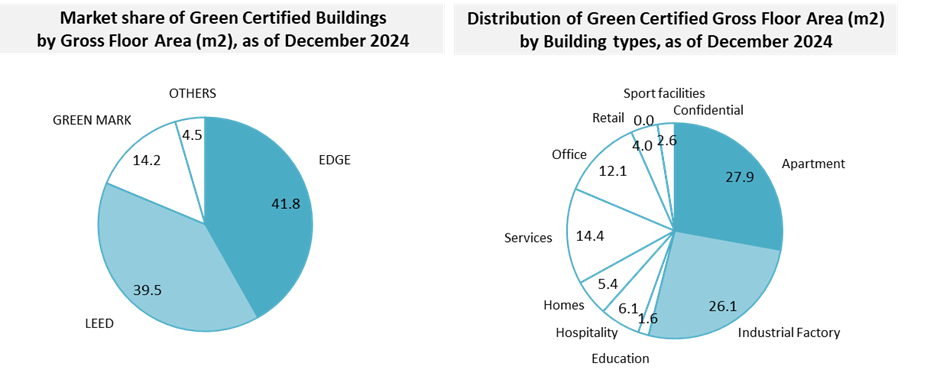
Source: EDGE Buildings, IFC, World Bank Group
In Vietnam, the most widely adopted green building standards include Leadership in Energy and Environmental Design (LEED), World Bank’s Excellence in Design for Greater Efficiencies (EDGE), Singapore’s Green Mark, and LOTUS —a standard specifically designed for Vietnam[6]. Notably, over 80% of these projects are certified under LEED and EDGE.
The majority belong to the green apartment group, accounting for 27.9% of the total floor area, followed by industrial factories (26.1%). Beyond green apartments, the past two years have seen notable growth in green industrial buildings, with the total number of green factories reaching 163—tripling in just two years. Hoang Manh Nguyen, a member of the Vietnam Green Building Council, stated that there is significant demand for green buildings in green industrial parks, especially for factories that export products to developed countries. Many of these factories require certification to ensure their products can be exported and maintain operations.[7]
Rising opportunities in Vietnam’s green architecture
The Green Infrastructure Investment Opportunities (GIIO) report further underscores the global shift toward sustainable development, estimating nearly $100 trillion in green infrastructure investments worldwide between 2019 and 2030. Vietnam is no exception to this trend, as the country pushes towards net-zero emissions by 2050 while also being driven by rapid urbanization and strong economic growth [8]
As a milestone toward net-zero emissions, Vietnam has stated in its nationally Determined Contribution (NDC) its target to reduce 74.3 million tons of CO2 by 2030. Green building projects, therefore are playing a critical role in achieving this target, reinforcing the country’s commitment to sustainability while opening doors for investors, developers, and businesses seeking to capitalize on this fast-growing sector.[9]
According to the International Finance Corporation (IFC), Vietnam’s green building sector presents the largest investment opportunity in green investing, valued at almost $80 billion. This surpasses the renewable energy sector, which ranks second with a potential investment of $59 billion. These figures highlight the financial attractiveness of sustainable infrastructure and its role in shaping Vietnam’s future urban landscape.
Challenges in green buildings in Vietnam
However, unlocking the full potential of green construction in Vietnam requires overcoming key barriers, primarily due to misconceptions among investors. Many developers worry that constructing and developing green buildings will increase investment costs by 20-30% or even higher. However, global studies show that while green buildings require an additional 3-8% investment compared to conventional buildings, they offer substantial long-term benefits, including 15-30% energy savings, a 30-35% reduction in carbon emissions, 30-50% water savings, and 50-70% lower waste treatment costs [10].
Beyond cost concerns, Vietnam’s green building sector also struggles with several barriers, such as a lack of certifications for green and energy-efficient materials and a shortage of skilled professionals with expertise in green construction. Addressing these challenges will be crucial in accelerating the adoption of green buildings and unlocking the sector’s full potential in Vietnam [11].
Government policies supporting green buildings
To overcome challenges and drive green building growth, the Ministry of Construction (MoC) is collaborating with ministries and agencies to propose key regulations. These include a list of green projects eligible for green credit access and energy labeling regulations for building materials, set to be incorporated into the 2025 Law on Energy Efficiency and Conservation.
The MoC guides local authorities, businesses, and investors in integrating green building criteria into urban classification, apartment grading, and social housing development. Additionally, it is revising QCVN 09:2017/BXD, developing energy-saving standards, and setting investment benchmarks to help stakeholders estimate green building costs.
Government incentives are crucial in advancing green construction. Over the past five years, the MoC, with UNDP’s Global Environment Facility (GEF), has implemented the Energy Efficiency in Commercial and High-Rise Residential Buildings (EECB) project, demonstrating solutions that reduce energy use by 25-67% with only a 3% increase in investment costs, achieving payback within five years.
Also, Vietnam’s construction sector has enacted the following policies to facilitate the construction of green buildings:
– Resolution 55-NQ/TW on the Orientation of the National Energy Development Strategy of Vietnam to 2030, with a vision to 2045;
– Revised Law on Construction (2020);
– Vietnam Energy Efficiency Programme 2019-2030;
– Decision 1393/QD-TTg on “National Green Growth Strategy”;
Market entry opportunities and case studies for Japanese companies
Vietnam’s green building sector presents strong opportunities for Japanese companies, driven by increasing demand for energy-efficient buildings, particularly in industrial parks and warehouses. At the same time, the government is offering tax incentives, low-interest green loans, and streamlined approvals to promote sustainable construction. With both rising demand and strong policy support, Vietnam’s green building market is highly attractive and open to foreign investors, creating a prime opportunity for Japanese firms to expand their expertise in sustainable construction technologies.
Japanese firms can leverage their expertise by developing green-certified industrial parks, integrating renewable energy solutions, and supplying low-carbon building materials and smart technologies. Successful examples include Sumitomo Corporation[12], which developed Thang Long Industrial Parks in Hanoi, Vinh Phuc, and Hung Yen with sustainable infrastructure; and Sojitz Corporation[13], which is investing in Loteco Industrial Park in Dong Nai, incorporating smart and eco-friendly solutions.
By entering this expanding market, Japanese firms can align with Vietnam’s green growth strategy while gaining a competitive edge in sustainable construction.
[1] https://vneconomy.vn/vietnams-green-building-certifications-sharply-increase-exceeding-targets.htm
[2] https://vietnam.vnanet.vn/english/print/green-buildings-in-vietnam-double-last-year-388166.html
[3] https://english.vov.vn/en/society/green-buildings-in-vietnam-double-last-year-post1154777.vov
[4] https://baochinhphu.vn/thuc-day-chuong-trinh-quoc-gia-su-dung-nang-luong-tiet-kiem-hieu-qua-102220714113237189.htm
[5] https://vneconomy.vn/vietnams-green-building-certifications-sharply-increase-exceeding-targets.htm
[6] https://baodautu.vn/tang-nhanh-cac-cong-trinh-xanh-tai-viet-nam-d245044.html
[7] https://www.reccessary.com/en/news/vn-market/vietnam-green-building-surge-2024
[8] https://www.climatebonds.net/resources/reports/green-infrastructure-investment-opportunities-giio-vietnam
[9] https://vneconomy.vn/techconnect//cong-trinh-cong-nghiep-xanh-viet-nam-dang-tang-manh.htm
[10] https://vneconomy.vn/so-luong-cong-trinh-xanh-van-con-khiem-ton.htm
[11] https://nhandan.vn/phat-trien-cong-trinh-xanh-chuyen-dong-tu-chinh-sach-den-hanh-dong-thuc-tien-post834868.html
[12] https://vccinews.vn/news/55816/sumitomo-va-cnctech-ky-ket-bien-ban-ghi-nho-hop-tac-chien-luoc.html
[13] https://vnexpress.net/khu-cong-nghiep-xanh-loteco-2703062.html
* If you wish to quote any information from this article, please kindly cite the source along with the link to the original article to respect copyright.
| B&Company
The first Japanese company specializing in market research in Vietnam since 2008. We provide a wide range of services including industry reports, industry interviews, consumer surveys, business matching. Additionally, we have recently developed a database of over 900,000 companies in Vietnam, which can be used to search for partners and analyze the market. Please do not hesitate to contact us if you have any queries. info@b-company.jp + (84) 28 3910 3913 |
